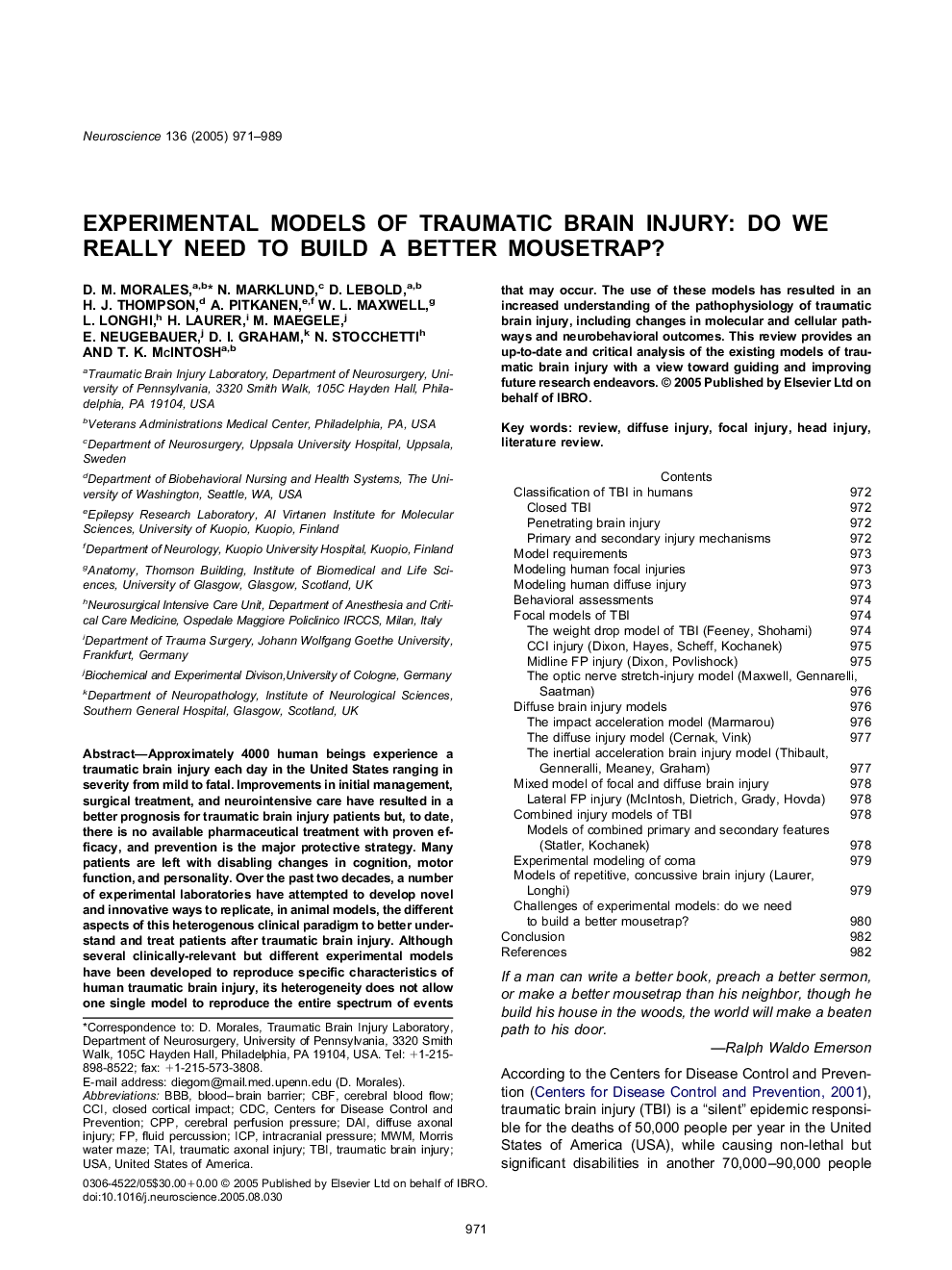| کد مقاله | کد نشریه | سال انتشار | مقاله انگلیسی | نسخه تمام متن |
|---|---|---|---|---|
| 9425485 | 1295876 | 2005 | 19 صفحه PDF | دانلود رایگان |
عنوان انگلیسی مقاله ISI
Experimental models of traumatic brain injury: Do we really need to build a better mousetrap?
دانلود مقاله + سفارش ترجمه
دانلود مقاله ISI انگلیسی
رایگان برای ایرانیان
کلمات کلیدی
CPPTBIDAIMWMCCICBFCDCICPTAI - ORTraumatic axonal injury - آسیب آسیب تروماتیکTraumatic brain injury - آسیب تروماتیک مغزDiffuse axonal injury - آسیب پذیری آسیب دیدهhead injury - آسیب به سرUnited States of America - ایالات متحده آمریکاUSA - ایالات متّحدهٔ آمریکاcerebral blood flow - جریان خون مغزیBBB - سد خونی مغزیBlood–brain barrier - سد خونی مغزیFluid percussion - سوراخ سیالاتintracranial pressure - فشار درون جمجمهایCerebral perfusion pressure - فشار پرفسور مغزیMorris water maze - ماز آب آب موریسCenters for Disease Control and Prevention - مراکز کنترل و پیشگیری از بیماریReview - مرورLiterature review - پیشینه پژوهش
موضوعات مرتبط
علوم زیستی و بیوفناوری
علم عصب شناسی
علوم اعصاب (عمومی)
پیش نمایش صفحه اول مقاله

چکیده انگلیسی
Approximately 4000 human beings experience a traumatic brain injury each day in the United States ranging in severity from mild to fatal. Improvements in initial management, surgical treatment, and neurointensive care have resulted in a better prognosis for traumatic brain injury patients but, to date, there is no available pharmaceutical treatment with proven efficacy, and prevention is the major protective strategy. Many patients are left with disabling changes in cognition, motor function, and personality. Over the past two decades, a number of experimental laboratories have attempted to develop novel and innovative ways to replicate, in animal models, the different aspects of this heterogenous clinical paradigm to better understand and treat patients after traumatic brain injury. Although several clinically-relevant but different experimental models have been developed to reproduce specific characteristics of human traumatic brain injury, its heterogeneity does not allow one single model to reproduce the entire spectrum of events that may occur. The use of these models has resulted in an increased understanding of the pathophysiology of traumatic brain injury, including changes in molecular and cellular pathways and neurobehavioral outcomes. This review provides an up-to-date and critical analysis of the existing models of traumatic brain injury with a view toward guiding and improving future research endeavors.
ناشر
Database: Elsevier - ScienceDirect (ساینس دایرکت)
Journal: Neuroscience - Volume 136, Issue 4, 2005, Pages 971-989
Journal: Neuroscience - Volume 136, Issue 4, 2005, Pages 971-989
نویسندگان
D.M. Morales, N. Marklund, D. Lebold, H.J. Thompson, A. Pitkanen, W.L. Maxwell, L. Longhi, H. Laurer, M. Maegele, E. Neugebauer, D.I. Graham, N. Stocchetti, T.K. McIntosh,